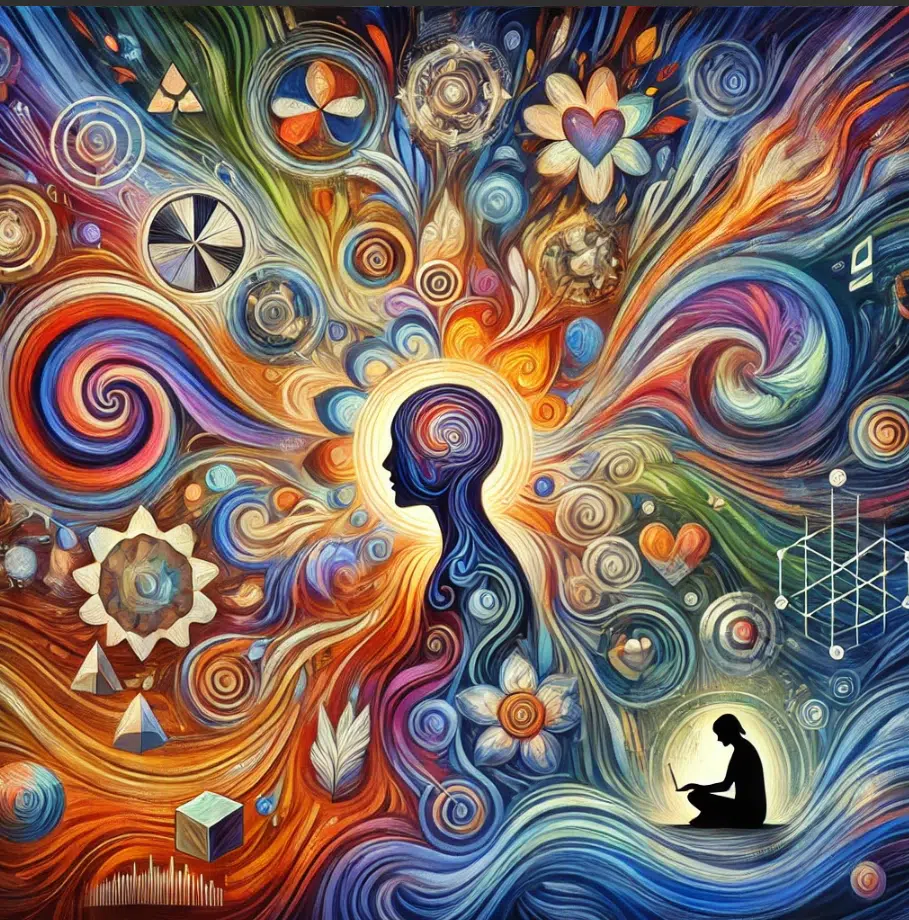If you’ve heard the term “AuDHD,” you might be familiar with the idea of someone having both Autism Spectrum Disorder (ASD) and Attention-Deficit/Hyperactivity Disorder (ADHD). But what does it really mean to live with this combination? When autism and ADHD coexist, their interaction can create a unique experience that’s often challenging to describe, but also rich with specific strengths and potential. This blog explores some of the distinct characteristics of AuDHD, offering insight into the lives of people who embody both neurodivergences.

1. Unique Sensory Experiences
For someone with AuDHD, sensory experiences are often amplified. Many individuals have a heightened sensitivity to light, sound, touch, or smell, which can lead to sensory overload. This is commonly experienced by people with autism, but ADHD can amplify the impulsive reactions to these stimuli. For example, a sudden loud noise might not only be overwhelming but also prompt an immediate and intense reaction that feels impossible to control.
On the other hand, AuDHD individuals may also experience sensory-seeking behaviors. This might look like the ADHD urge to fidget, combined with a deep need for a particular sensory input, such as specific textures or repetitive movements. These sensory-seeking behaviors can help regulate emotions and focus, providing comfort and stability in an otherwise overwhelming environment.
2. Hyperfocus and Attention Regulation
Attention regulation can be a rollercoaster for those with AuDHD. One moment, someone might be deeply engrossed in a topic of interest, displaying what’s often called “hyperfocus.” This is when focus is so intense that the person becomes almost unaware of the outside world—a characteristic often linked to both ADHD and autism.
However, this intense concentration can flip unpredictably. The ADHD side might struggle to maintain focus on tasks that don’t provide instant gratification or personal interest. The result is a constant balancing act between hyperfocus and inattention, making day-to-day functioning—like completing mundane chores or staying organized—an ongoing challenge.
3. Social Nuances and Connection
Social interactions are a mixed bag for those with AuDHD. Autism can bring difficulties in reading social cues, such as facial expressions or tone of voice, which can make socializing exhausting or confusing. ADHD, on the other hand, may lead to impulsive speech—saying something without fully thinking it through or interrupting conversations. Together, these traits can create unique social challenges.
Yet, many AuDHD individuals are deeply empathetic and desire meaningful connections. They may struggle with small talk but thrive in conversations about topics they’re passionate about. While socializing might be tricky to navigate, AuDHD folks often bring authenticity and enthusiasm to their relationships, forming bonds that are rich and sincere.
4. Emotional Intensity and Regulation
Emotional regulation is often an area of struggle for individuals with AuDHD. ADHD typically brings heightened emotional reactivity, meaning emotions—both positive and negative—can feel incredibly intense. Autism can add another layer, with emotions sometimes feeling confusing or overwhelming, particularly when trying to identify or describe them.
This combination often leads to meltdowns or shutdowns—times when the emotional overload becomes too much to handle. Meltdowns might look like an outward burst of frustration, while shutdowns involve withdrawing entirely. Understanding and managing these intense emotional reactions requires patience, self-compassion, and often a good support network.
5. Executive Functioning Challenges
Executive functioning refers to skills like planning, organizing, and managing time—areas that can be particularly challenging for those with AuDHD. ADHD’s impact on executive functioning is well-documented, often leading to procrastination, difficulty starting tasks, or trouble keeping track of responsibilities. Autism can add a need for routines and predictability, which might conflict with ADHD’s struggles to stay organized.
This can lead to a paradox: a desire for structure without the ability to easily create it. People with AuDHD may find themselves craving routine yet feeling incapable of consistently maintaining one, resulting in a cycle of frustration and stress. However, finding the right strategies—like visual schedules, timers, or external support—can make a significant difference.
6. Special Interests and Creativity
One of the beautiful aspects of AuDHD is the combination of special interests and creative thinking. Many individuals develop deep, passionate interests that they pursue with incredible dedication. These special interests are a hallmark of autism, and when combined with the creativity and curiosity that often accompanies ADHD, they can lead to amazing achievements.
Whether it’s art, technology, storytelling, or a niche topic that only a few people in the world know about, these interests bring joy and a sense of purpose. They also offer a way to cope with the challenges of daily life, providing a comforting space where the individual feels competent and at ease.
Living with AuDHD: Embracing the Spectrum
Living with both autism and ADHD can be a journey filled with contrasts—highs and lows, strengths and struggles. The traits that come with AuDHD can be challenging, especially in a world that often doesn’t accommodate neurodivergent experiences. However, these same traits also bring unique strengths: creativity, empathy, resilience, and the ability to see the world in a way that others might not.
Understanding the characteristics of AuDHD is a step toward embracing the full spectrum of what it means to be neurodivergent. It’s about finding tools and strategies to cope with the challenges while celebrating the incredible strengths that come from thinking and feeling differently. If you or someone you know is navigating life with AuDHD, know that you’re not alone—and that there’s a community out there ready to connect, support, and celebrate with you.